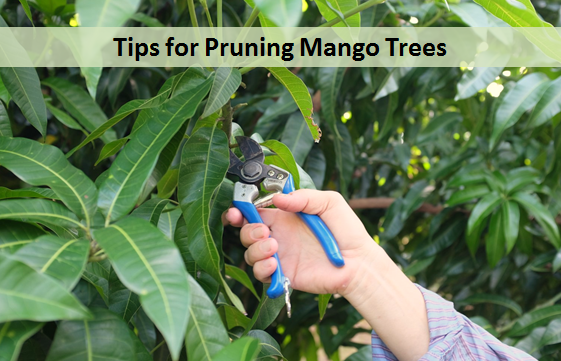Fruit Garden
Tips for Pruning Mango Trees
There are several tips for pruning mango trees effectively. If you are going to do it yourself, here are several basic tips for pruning mango trees that you may find useful. Although you can sometimes do it yourself, without professional training there are a number of problems that you could run into. It is always best to seek the assistance of someone who has the right amount of experience and knowledge to handle the job right.
1. Best Season to Prune Mango Trees
Pruning mangoes should ideally be done in the late winter or early spring, after the sap flow has stopped. Remove any dead branches and trim back the length of the branches as desired. New growth will form in these areas. Make sure you don’t cut too far above the desired level. Allow the new growth to push through the existing branches. Pruning can be done later in the season as the colder weather approaches.
2. Cut Away Weak and Unhealthy Branches
The trunk of a tree is usually strong enough to support healthy branches. Cut away branches that are weak and unhealthy, discoloring the tree. You should also remove diseased and dead branches. This will prevent disease and pests from setting in. Removing diseased branches helps prevent insect infestations.
3. Prune Two-thirds of Shoot
When pruning, it is important to prune at least two-thirds of the shoot that was included in the original tree. You should also prune the entire shoot if you plan to grow a large tree. Do not prune more than half of the shoot. Pruning is not an easy task and takes time, but it is worth the effort.
4. Determine the State of Branches Before Pruning
It is important to determine whether the branch is weak or healthy before cutting. A sick branch will have noticeably weak growth and will be falling. This weak growth can easily break off and cause damage to nearby trees. When cutting mango trees, the healthy branches should be left intact and the sick ones should be cut away. Mango trees are delicate and need to have regular maintenance.
5. Maintaining Health and Shape of Tree
In order to maintain the health and shape of the tree after pruning, it is necessary to shape the plant each year. Cut back mature branches to reduce the amount of weight they carry. The weight of the branches can easily double or triple after a certain period of time, causing the tree to become unstable.
6. Make Sure the Portion to be Pruned is not Diseased
The first thing you have to understand about the tips for pruning mango trees is that there are some steps that need to be followed at all times. When you cut down a part of the tree, you must always make sure that the branch or portion of the tree is clean and not diseased or damaged.
7. Pruning Parts Containing Urushiol
Mango trees often contain urushiol, which is the same substance that poison ivy, oak, and sumac have. This substance is found in the young stems, leaves, bark, and twigs and makes the tree look unhealthy. In fact, some of the young trees do not survive the long process of maturity and die very quickly. Hence, you must always take care when cutting off any part of the plant that contains this substance.
8. Learn Correct Pruning Procedure
If you wish to have a healthy and beautiful plantation of mango trees, it is vital that you learn the correct procedure of pruning mango trees at their early stages. The main aim of pruning is to remove old and sick branches that are interfering with the flow of air or pollinating the flowers of your mango. Ideally, you should wait until the flowering period is complete before pruning; however, this can be difficult to achieve if you are continuously pruning your trees.
9. Make Sure Branch Remain Healthy and Upright
When you are pruning your mangoes, you should make sure that the branch remains healthy and upright; it should not break down and break off because this will reduce the life span of the mango leaf. Some of the most common reasons why your mangos fall over include too much harvesting, bad weather, improper pruning, too much watering, and too many fruits being plucked from the tree. A major problem associated with mangos is the formation of poison ivy inside the branches of the mango. Poison ivy causes an itching and burning sensation in the affected area, which eventually leads to swelling, blisters, and eventually the death of the affected branch.
10. Conclusion
You can start learning tips for pruning mango trees today. There is a lot that you can learn by simply going online. There are many videos available that show exactly how to do it. Also, there are plenty of photos that will help inspire you. When you read other people’s experiences, you will find that they have learned something useful. It can be quite difficult to get started with pruning your mango trees, but after reading these tips for pruning mango trees, you should have an easier time of it.

